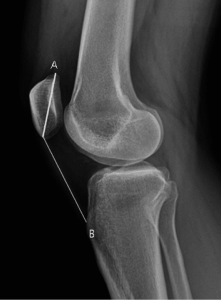- February 9, 2019
- Posted by: Daniel Ryan
- Category: Knee Injuries

Patellofemoral Instability | Knee Pain Treatment East Fremantle
Patellofemoral instability refers to excessive movement of the patella at the site of the kneecap. People with this condition usually describe sensations of instability (or the kneecap moving and ‘slipping’) and a pattern of knee pain that is very similar to patellofemoral knee pain syndrome.
Primary patellofemoral instability occurs in the absence of any trauma to the knee joint. Factors that predispose this include:
- Patella alta: This refers to the kneecap sitting slightly higher than normal

- Generalised ligamentous laxity: Many people with this condition a generally hypermobile, or may have been diagnosed with a condition such as Ehlers-Danlos Syndrome.
- Trochlear Dysplasia: This occurs when the groove in our femur that usually guides the movement of our kneecap is slightly more shallow than normal.
Conversely, secondary patellofemoral instability occurs after a traumatic episode that resulted in a dislocation of the kneecap and is usually associated with a rupture of the medial patellofemoral ligament. This ligament is the main restraint that stops our kneecap from displacing to the outer part of the knee.
Treatment of Patellofemoral Instability
Treatment of this condition parallels the management of patellofemoral pain syndrome. If the knee is highly painful it may require a period of rest and de-loading. Although characterised by excessive patella mobility, areas of tightness may still exist through areas such as the quadriceps, ITB and gluteal muscles that can be addressed through means such as dry needling and massage. Taping the kneecap or applying a brace to knee may assist in providing additional stability around the knee.
However, a comprehensive strengthening program is essential to prevent ongoing issues. People with this condition will require specific strengthening through the quadriceps to provide additional stability for the kneecap. Furthermore, it is important to look at the entire lower limb biomechanics, as many people who suffer with patellofemoral instability will concurrently present with patellofemoral joint pain symptoms. As such, foot posture, hip mechanics, glute and hamstring strength must all be assessed and managed appropriately.
If you are struggling with knee pain, book in with one of our physiotherapists. We offer extended initial appointments to fully determine the route of your condition and to provide a comprehensive and individualised rehabilitation protocol.
